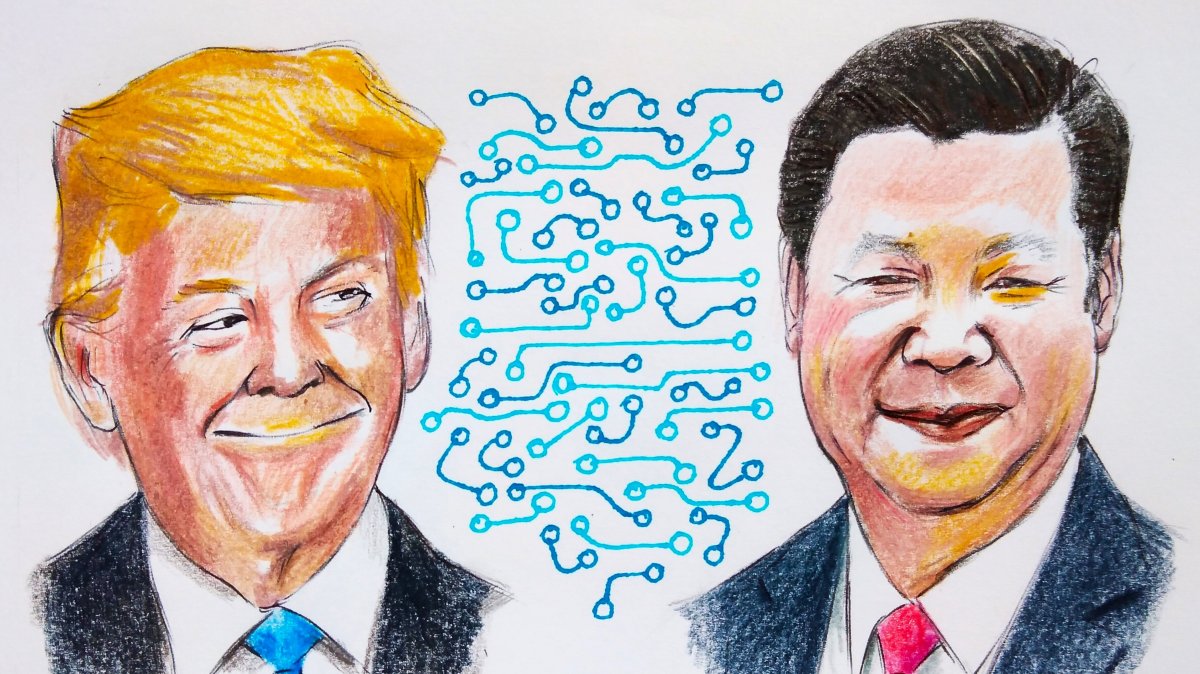As an International Relations professor, I have long advocated for an inclusive and democratic approach to emerging technologies, such as artificial intelligence. In my previous articles for Daily Sabah, I envisioned a future where AI development is shared globally, avoiding hegemony and fostering a stable international system. However, the realities of global politics often clash with these ideals. A stark example came recently, when the U.S. government released its new AI Action Plan with a blunt opening line: “America is in a race to achieve global dominance in artificial intelligence (AI).” The very word “dominance” signals a mindset at odds with the inclusivity I champion. It suggests a zero-sum pursuit of technological supremacy rather than a collaborative, democratized vision of AI.
In one sense, Washington’s candor is refreshing. Past rhetoric often tiptoed around the notion of an AI arms race, but now it is publicly acknowledged: the U.S. sees itself locked in competition (primarily with China) to lead the AI frontier. The action plan frames winning this race as essential to usher in a “new era of human flourishing, economic competitiveness and national security” for Americans. It outlines three strategic pillars to achieve this goal: accelerating AI innovation, building American AI infrastructure and leading in international AI diplomacy and security. In short, the U.S. is mobilizing the technological, economic and diplomatic facets of national power to secure what it calls AI dominance. This is reelpolitik in the digital age: a quest for primacy in the technologies that will define the 21st-century balance of power.
U.S.-China tech race, showdown
To anyone following U.S.-China relations, none of this comes as a surprise. The “technopolar” contest between Washington and Beijing has been brewing for years. Both President Joe Biden’s and President Donald Trump’s administrations, for instance, have maintained a hard line on tech trade with China, building on the policies of the previous administration. Biden not only kept his predecessor’s tariffs in place but also ratcheted up export controls on critical technology sectors. In May 2024, the White House unveiled steep tariff hikes on Chinese imports, from electric vehicle batteries to semiconductors, prompting immediate vows of retaliation from Beijing. China’s commerce ministry blasted the U.S. measures and pledged to “take measures to defend its interests.” This cycle of action and reaction has only intensified the sense of an accelerating tech race.
Beijing, for its part, has adopted an increasingly defiant tone. Chinese officials frequently decry U.S. “containment” efforts and have signaled that if Washington wants a confrontation in technology, China is prepared to meet it head-on. The rivalry now spans multiple fronts: investment screening, talent acquisition, patents and even “narrative.” Long story short, both superpowers are fortifying their positions: the U.S. is doubling down on domestic innovation and alliances, while China is doubling down on self-reliance in a duel for AI supremacy.
The technological rivalry between the U.S. and China extends far beyond algorithms and software, reaching deep into mines, factories and supply chains. For all the talk about AI algorithms and data, one truth lurks behind the curtain: to conquer the software, you must first conquer the hardware. Semiconductors, high-performance computing infrastructure and the raw minerals that go into them have become key battlegrounds. We saw this starkly in late 2024, when China banned exports of critical minerals, such as gallium, germanium and antimony, to the U.S., citing national security concerns. These obscure-sounding elements are, in fact, vital for semiconductor chips, military systems, and green technologies. Beijing’s move came one day after Washington tightened chip sanctions on China, marking a dramatic escalation of the tech trade war.
Washington recognizes this hardware vulnerability. The AI Action Plan explicitly emphasizes building up the physical foundations of American tech power. It calls for “streamlining permitting” and investment to restore domestic semiconductor manufacturing capacity, strengthen the electric grid and expand energy production to support power-hungry AI infrastructure. After all, training advanced AI models requires massive computing power and significant electricity consumption. America’s path to AI dominance, the plan acknowledges, depends on shoring up these tangible assets at home. This is why the U.S. has been rallying partners like Taiwan, South Korea and Japan to secure chip supply chains, even as it bars China from cutting-edge chips. Likewise, China has launched national programs to develop its own advanced chips and mitigate reliance on foreign inputs. The race for AI is as much about silicon wafers, rare earths and high-voltage transformers as it is about clever algorithms and big data.
Digital autonomy, AI divide
While the U.S.-China tech rivalry dominates headlines, the rest of the world cannot afford to remain passive. The newly released U.S. AI Action Plan signals more than a bid for dominance; it reflects a wake-up call for claiming digital autonomy, a nation’s ability to control its own technological infrastructure, standards and data governance. It serves as a wake-up call, not just for the U.S., but for every country seeking to safeguard its digital sovereignty amid growing technological dependency. In this technopolar world, digital autonomy is the shield and last resort of national sovereignty in the algorithmic age.
The U.S. Plan calls for building an “enduring global alliance” of American AI systems, aiming to export U.S.-led models and counterbalance Chinese influence in international institutions. Yet this strategy risks pushing neutral actors into binary alignments, turning global forums and digital markets into proxy battlegrounds. As reflected in the BRICS Rio Summit Leaders’ Declaration, Global South and middle power actors are, for now, resisting this polarization. Their focus on “digital sovereignty” reflects a desire to build autonomous capabilities and frameworks, free from overreliance on either (tech) polars. However, the zero-sum framing of the U.S. Plan risks alienating those striving for a more balanced and pluralistic digital future.
For developing countries, the stakes are even higher. Suppose cutting-edge AI capabilities remain in the hands of a few. In that case, today’s digital divide may harden into digital asymmetry: a world where a handful of states dominate infrastructure, standards, and data governance. This directly contradicts the vision of an inclusive and democratized technological order. The way forward demands targeted investment in education, AI infrastructure, and regional cooperation. But above all, it calls for a firm commitment to digital autonomy, the final safeguard of sovereignty in a fragmented and competitive digital landscape.
The U.S. declaration of an AI supremacy race marks a turning point in global affairs. It exposes the realist, hard power-fueled logic now shaping digital policy. For those of us who envision a cooperative and democratic tech future, this is a stark reality check; not as a cause for despair but a wake-up call for action. The race is on, and the U.S. has declared its intention to win. However, how the world responds – whether by accepting a new tech “hegemony” or building a shared digital future – will define not only this very technopolar era, but also the global order that follows.




















































Be First to Comment